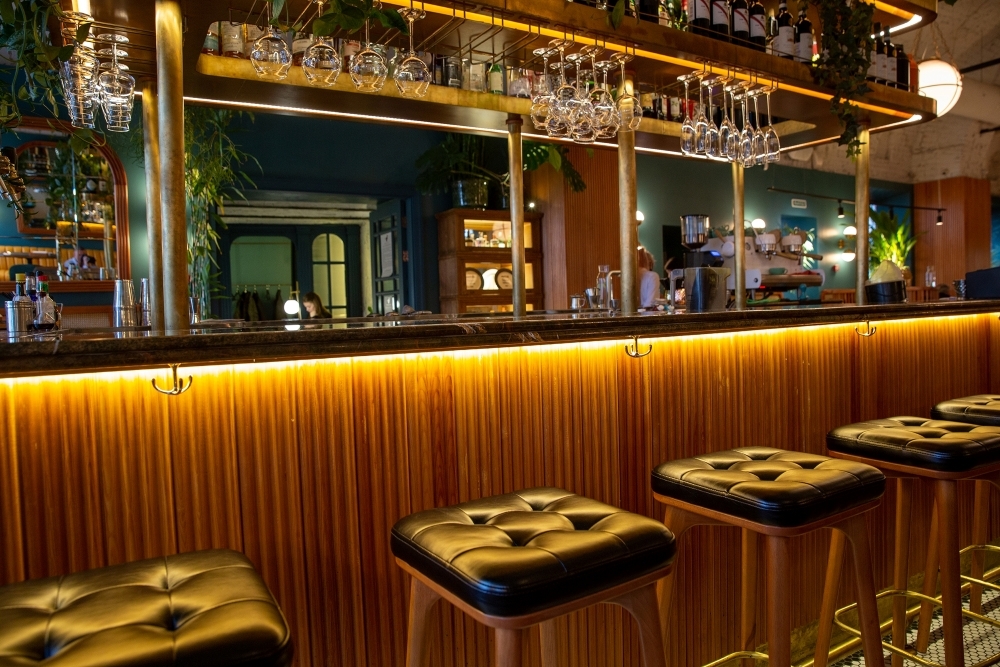The Enduring Appeal of Notting Hill Gate
Notting Hill has long been shorthand for London charm: pastel houses wrapped in wisteria, antique markets spilling onto cobblestoned streets, cafés with cinnamon buns cooling in the window. Yet at the heart of this West London idyll is Notting Hill Gate, a neighbourhood that is far more than just a pretty gateway. For decades, it has reinvented itself while keeping hold of the qualities that make it so magnetic: elegant architecture, creative verve and a certain worldly glamour.

A Crossroads with Character
Emerging from the Tube at Notting Hill Gate, you’re immediately struck by the area’s dual personality. One way lies the bustle of Kensington Church Street and the thoroughfare of Bayswater Road; the other, a warren of quiet residential lanes where plane trees stretch overhead and Victorian terraces gleam in the soft London light. It’s this mix, lively and village-like at once, that sets the tone. The Gate is a natural meeting point: a launchpad for Portobello Road Market at the weekend, for a walk across Kensington Gardens on a weekday morning, or simply for a late-evening drink with friends.
Stay a little longer and the subtler details emerge. Mews lanes open unexpectedly behind tall garden walls, while pocket-size courtyards reveal small coffee bars or artist studios. In spring the scent of magnolia drifts across Holland Park Avenue; in winter, mist curls around the grand façades like something from a Victorian novel.
An Architectural Patchwork
Architecture is central to the appeal. Mid-19th-century stucco villas sit alongside handsome red-brick mansion blocks and discreet mews houses. Many have been painstakingly restored, their elegant proportions and generous windows appealing to both design lovers and families seeking space and light. Communal garden squares, Stanley Crescent, Ladbroke Square and Arundel Gardens, offer residents leafy breathing space that feels surprisingly private. The result is a streetscape that remains consistently beautiful, even as individual houses take on contemporary interiors and clever extensions.
Look up at dusk and you’ll see the drama that makes estate agents wax lyrical: west-facing terraces catching the last wash of sunlight, iron balconies traced with ivy, rooftops glowing like a Turner sky.
Shopping, Restaurants and Everyday Pleasures
Notting Hill Gate’s everyday life is equally enticing. Morning coffee might mean a flat white at Kuro or a classic cappuccino at the long-standing Coffee Plant. For lunch, locals slip into favourites such as The Shed, with its field-to-fork small plates, or a neighbourhood Italian like Osteria Basilico. Evenings can stretch from Michelin-starred dining at The Ledbury to cocktails at Electric House or late-night plates at Gold.
On Saturdays, Portobello Road Market is irresistible: antiques for serious collectors at dawn, fresh produce and global street food by lunchtime. Westbourne Grove, meanwhile, has become a byword for boutique shopping, where independent fashion and interiors stores sit comfortably alongside international names. The weekly rituals, chatting to the cheesemonger, browsing vintage vinyl, give daily life the intimacy of a true village.
A Creative and Cultural Spirit
Notting Hill has always had a creative streak. In the 1950s and ’60s, it was a hub for artists, writers and musicians; today, that bohemian past lingers in venues like the Coronet Theatre, the Gate Cinema and countless small galleries and bookshops. The annual Notting Hill Carnival keeps the spirit alive on a grand scale, drawing revellers from across the world with its riot of music, dance and Caribbean flavours. Throughout the year, literary salons, film festivals and supper clubs ensure there is always something on the cultural calendar.
Practical Advantages
For all its romance, Notting Hill Gate is also eminently practical. Three Underground lines, Central, Circle and District, put the West End and the City within easy reach. Renowned schools, both state and independent, attract families who might otherwise decamp to the countryside. Green space is close at hand, from the formal beauty of Kensington Gardens to the wilder corners of Holland Park. It is rare in London to find such seamless access to both culture and calm.
A Market That Defies Trends
Little wonder that property here remains in demand through every market cycle. Victorian terraces and mansion flats rarely stay on the market for long, while modern apartments, often with terraces overlooking the rooftops, attract professionals and downsizers alike. The area’s enduring popularity means values have held strong even through more volatile times, offering a reassuring blend of lifestyle and investment.
Why the Allure Endures
What ultimately sets Notting Hill Gate apart is how the ordinary day-to-day is overlaid with drama. In early autumn, the garden squares become golden theatres of falling leaves; in spring, wisteria tumbles over iron railings in extravagant cascades. At twilight, the terraces along Stanley Crescent or Linden Gardens seem to drink in the last light, their brick and stucco façades turning a warm, burnished rose. Few parts of London offer such consistent beauty at every hour and in every season.
Yet for all its elegance, the Gate never feels too curated. Historic pubs still hum with local gossip, and Portobello traders greet regulars by name. Children race through communal gardens after school, while late-night diners spill onto pavements under strings of soft lights. New restaurants and galleries arrive, but the essential vibe of W11, the neighbourly hellos, the market’s early chatter, the quiet of a Sunday evening walk, remains utterly unchanged.



